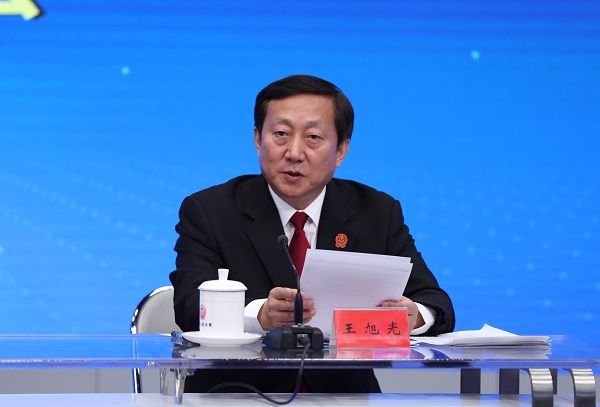SPC reports on judicial protection for ecosystem of Yangtze River basin
The Supreme People’s Court (SPC) held a press conference on Jan 9 to report on progress in providing judicial protection for the ecosystem of the Yangtze River Economic Belt and issued 10 typical cases on the subject.
Jiang Bixin, SPC’s vice-president, said that through a range of reforms and innovations as well as the enrichment of the rule system and law-based and impartial trials of all types of environment and natural resource-related cases over the four years since 2016, Chinese courts have supplied potent judicial services and support for high-quality development of the Yangtze River Economic Belt.
 |
| Jiang Bixin, vice-president of the SPC, speaks at the press conference. [Photo/court.gov.cn] |
Jiang pointed out that the two documents on the subject issued by the SPC in February 2016 and December 2017 have laid the groundwork for strengthening the judicial protection of the Yangtze River basin.
Jiang said that Chinese courts have maintained a flexible mentality in coordinating the relationships between overall advancement and breakthroughs in specific areas, the rule of law and economic development, and trial mechanisms and systemic governance.
He said that to constantly improve the efficacy of judicial trials, courts along the Yangtze River have set up as many as 488 dedicated tribunals for civil, commercial, administrative and even criminal cases concerning the environment and natural resources.
He said that to accommodate the completeness and mobility of the river’s ecosystem, higher people’s courts along the belt have also piloted a jurisdiction system centered on basins, lakes, national parks and nature reserves.
Jiang noted that a cross-provincial judicial assistance mechanism has been preliminarily established with the signing by 12 provincial-level regions’ higher people’s courts of a framework agreement on mutual assistance in hearings of environmental and natural resource-related cases
In addition, a cross-departmental cooperation mechanism has also been improved as the SPC and the leading group overseeing the development of the belt inked a framework agreement on judicial cooperation in December 2016, which was followed by the release of the minutes of a meeting of China’s top procuratorate and ministries responsible for public security, judicial administration and environment, according to Jiang.
He said that courts along the belt draw on criminal, administrative and civil liabilities to promote the belt’s sustained environmental improvement
The SPC has also been making the best of litigation in the public interest and of actions seeking compensation for ecological and environmental harm to accelerate environmental restoration, according to Jiang.
He mentioned that meanwhile the SPC has also been making efforts to promote public engagement in environment-related trials by fully implementing the system of people’s assessors.
To boost the social effect of environment-related trials, Chinese courts have taken advantage of various means such as online publicity, press conferences and white books to respond to public concerns and raise people’s awareness of environmental protection, said Jiang.
Also at the press conference, Wang Xuguang, head of the SPC’s tribunal for the environment and natural resources, unveiled 10 typical cases on judicial protection of the Yangtze River Economic Belt, seven of which are criminal, one administrative, one in the public interest and one seeking compensation for ecological and environmental harm.
 |
| Wang Xuguang, head of the SPC’s tribunal for the environment and natural resources, makes a report at the press conference. [Photo/court.gov.cn] |







